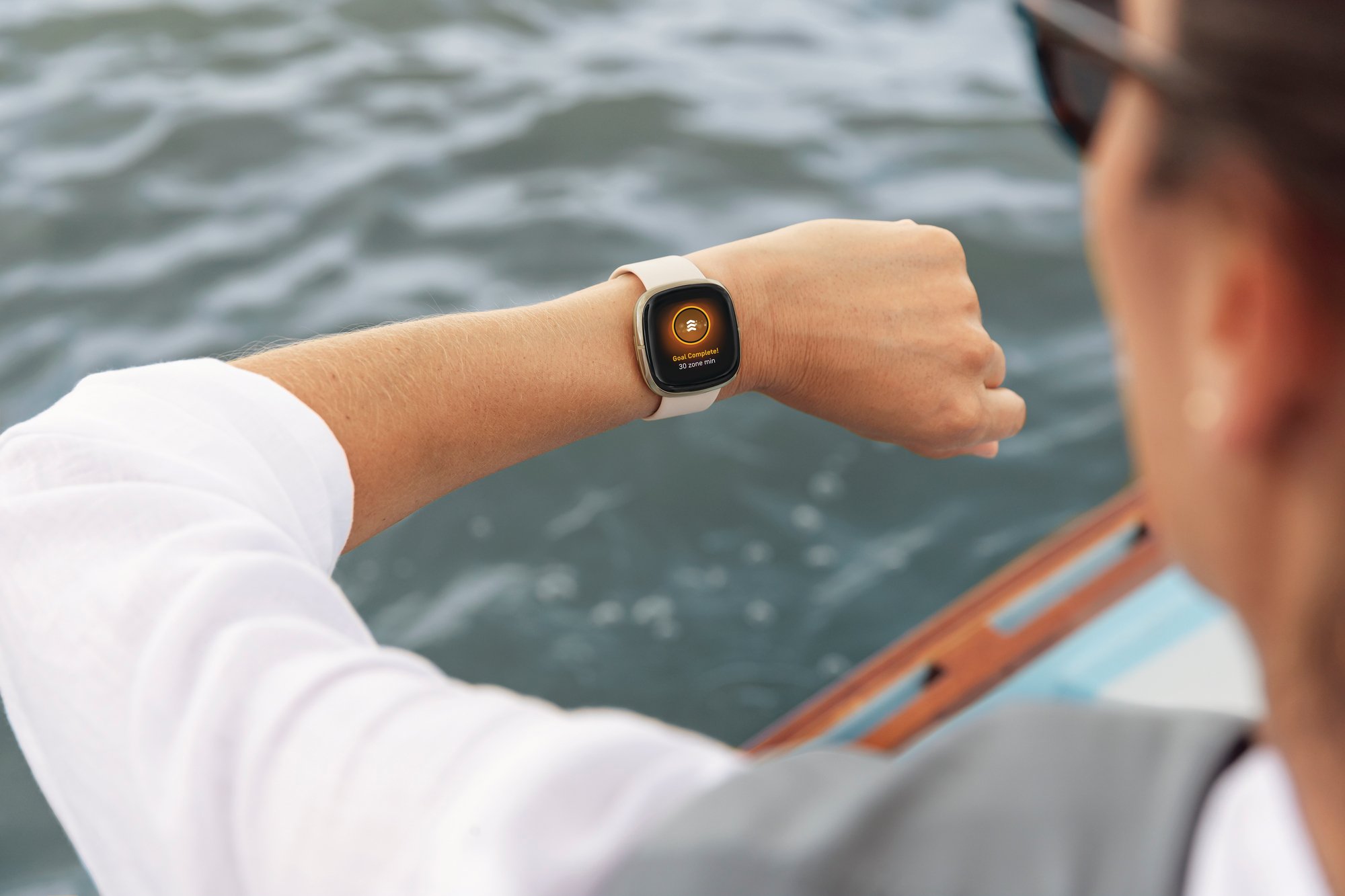The Versa has been described as the smartwatch Fitbit (FIT +0.00%) should have released when it launched the doomed Ionic. Functional, sleek, and smaller, the Versa should overcome the few flaws it does possess to receive much greater acceptance than its predecessor.
Yet focusing on the Versa could cause someone to miss the big picture. In addition to the Versa, Fitbit released the kid-centric Ace fitness tracker, essentially a rebranded Alta HR device, that could become the big hit it needs.

Image source: Fitbit.
Acing the kid market
The Ace is Fitbit's first wearable for kids. It automatically tracks their steps, the amount of time they're active, and their sleep patterns. The Ace allows goals to be set for the number of steps to be taken in a day and the amount of time children should be active. To keep them from being sedentary, personalized reminders can buzz them every hour to take at least 250 steps and reward them with badges if they achieve their goals. (It can be set to snooze during school hours.)
Perhaps the most important feature is that the device complies with the Child Online Privacy Protection Act (COPPA). That law limits the collection and use of personal information about children younger than 13 by operators of websites and online services, and gives parents greater oversight of what is shared. Few kid fitness trackers are COPPA compliant; even Garmin's (GRMN 0.31%) vivofit jr. only offers a "parent" app to sidestep children's privacy laws.
The Centers for Disease Control and Prevention says the incidence of childhood obesity has tripled since the 1970s with nearly one in five school-age children and young people overweight. The Ace is perfectly matched with Fitbit's new focus on healthcare, and also ties in with where the wearables market might be heading.
Where can the market go?
Sales of wearable devices are expected to hit 504 million units by 2021, according to the research firm Gartner, a 63% increase over last year. Smartwatches themselves are expected to account for almost 81 million of the units shipped by then, and Gartner anticipates that kids' smartwatches will represent 30% of the total, or more than 24 million units. Kids' devices have the potential to be the biggest growth driver of the category.
One of Fitbit's competitors, Garmin -- which has had a kids' tracker on the market since 2016 -- has seen fitness become its largest operating segment, generating more than $762 million in revenue last year, representing 29% of the device maker's total annual operating profit. Yet as the basic fitness tracker market declined, Garmin's fitness revenue declined 7% from the year-ago period, similar to what has occurred at Fitbit. Like its rival, Garmin has moved into the smartwatch market as users show a preference for devices that aren't exclusively fitness trackers.
Then there's the question of how Apple (AAPL 1.04%) will impact the kids' market. Similar to how the kids' tablet market was moved by children getting older generation hand-me-down devices as their parents upgraded to the newest version, we may see the kid smartwatch market driven by parents handing down their Apple Watch and Apple Watch 2 as they upgrade to the latest Apple Watch 3.
Apple has the potential to suck the oxygen from the room in the smartwatch market, and because its devices are feature rich, they may prove more valuable when a consumer considers whether to buy a new Fitbit or Garmin device.
A smartwatch to grow with
Fitbit has the potential to make a mark here, but it needs to do more than add a plastic wristband to an existing device, as it largely did with the Ace. While a user can swap out the wristbands as the child grows, Garmin makes their bands more fun through a partnership with Disney, putting not only traditional characters like Minnie Mouse on the device, but also those from Star Wars, and Marvel comics.
Where the Versa seems to be the device that the Ionic should have been, the Ace is what the Alta HR probably should have been. Now that it is, Fitbit needs to build on that. There's a major growth opportunity here, and it could be even bigger than what the smartwatch maker realizes from the adult market.







